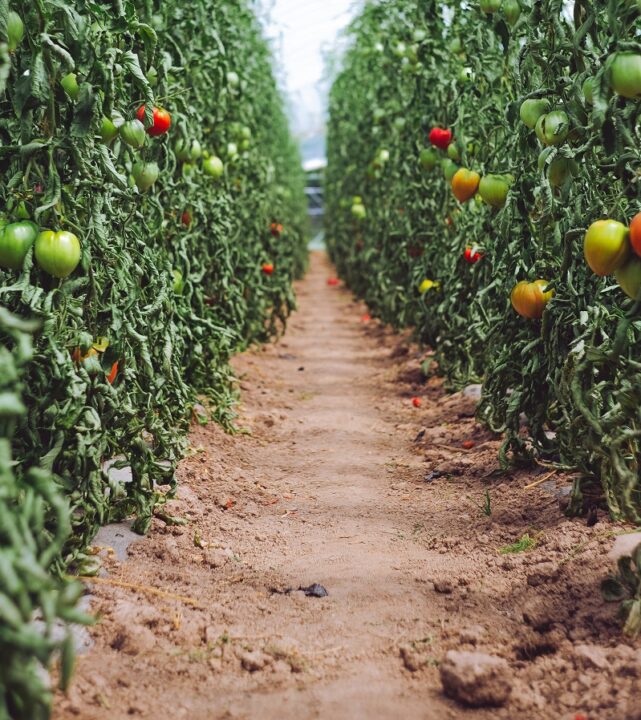How To Elect The Right Fungicide For The Job

Choosing the right fungicide can be critical as shown here by the stark contrast between a fungicide-treated garlic leaf (right) and an untreated leaf covered with a pathogenic rust fungus.
Photo credit: S. T. Koike
It’s that time of year again, the time when the nation once more faces critical questions about the future ahead. Once again, vegetable farmers throughout the country leave winter behind and head into the spring production cycle of plowing, preparing, seeding, irrigating, fertilizing, and waiting. Waiting for crops to grow and develop. As growers engage in these familiar tasks, the annual challenge of managing plant diseases also looms ahead.
Experienced growers and other field professionals will use the multifaceted integrated pest management (IPM) strategy that deploys diverse disease management control options. Such options include the planting of resistant cultivars, planting in pathogen-free locations, rotating crops, implementing cultural practices that favor the crop and disfavor the pathogen, applying fungicides, and other measures.
Fungicide application is one tool of a successful IPM program for crop diseases. Used judiciously and appropriately, these chemicals are powerful allies in the fight against the fungi and bacteria that attack crops.
However, which fungicide should a grower select? How does one go about selecting the right candidate fungicide among many choices? What follows are five factors to consider when making this important decision.
1. Fungicide Candidate Discussion
Debating the virtues and shortcomings of candidate fungicides can be a useful exercise. Fellow growers, field personnel, consultants, and manufacturer representatives can share their perspectives and experiences regarding fungicide products. Such discussions should be based on factual reporting as well as sound, keen observations of field performance.
In fact, previous field performance is a key consideration in helping growers choose a fungicide. While not a certain guarantee of future success, a history of what a product did in the past provides a context for future decisions.
However, talk that is not supported by facts is not enough. Testimonials as to fungicide performance must be backed by field research and practice. The manufacturers themselves invest heavily in studies designed to demonstrate how a fungicide performs against target pathogens. These field studies are complemented by university Extension and private consultant research that adds further background data that support claims of efficacy.
2. Campaigns, Ads, And Publicity
Everyone understands the business motivation behind advertising, and that is no different when it comes to chemical companies providing information about their products to the agricultural community.
Fungicide producers truly aim to assist growers with their battle against diseases, but obviously need to obtain business profit from sales. As with all advertising you see, you should carefully weigh and interpret fungicide ads and other publicity.
Such write-ups often are very useful in highlighting the benefits, possibilities, use recommendations, as well as limitations of products.
Growers know to consult various sources of information that would provide a balanced approach to the question regarding a product’s performance. Such diverse sources should include commercial ads as well as Extension articles and bulletins, technical reports from manufacturers, and research publications from university and other research organizations.
3. Labeling
Of course, fungicide product labels provide essential information that assist in the selection process. Virtually all questions regarding interactions between crop, fungicide, and pathogen are addressed on the label.
Is the product labeled for the crop in question? Which pathogens are effectively managed? What are recommended rates, application timings, and scheduling considerations? Are there plant-back restrictions that might take this fungicide out of therunning for use? What are the preharvest intervals that dictate how close to harvest the product can safely be deployed? Are there phytotoxicity or other risks to weigh?
Label information on the chemical name and classification are necessary when growers and shippers need to be aware of market considerations such as maximum residue levels and field considerations (rotating different chemical families to reduce the risk of inducing pathogen resistance). As part of a resistance management strategy, field professionals will select and rotate products having different modes of action. Therefore, the Fungicide Resistance Action Committee group numbering found on the label will facilitate this selection process.
4. Economics And Costs
Farmers straddle that defining line between realizing a profit on their crop and losing money because of high production costs and low prices. Therefore, the cost of applying fungicides is no minor consideration. In addition, many of the new generation fungicides are relatively expensive to use, though per-acre rates tend to be low. Product price per acre may be a factor in choosing between fungicides that have comparable levels of performance.
5. Tallying The Final Vote
Which fungicide should a grower select? How does one go about selecting the right candidate fungicide among many choices? The farmer and disease management professional must make a choice between candidate fungicides. In some cases, a particular product has all advantages, meets all desired criteria, and will be the clear winner.
In other instances, several products may be comparable in performance and features and the final decision might come down to price. In all cases, the agricultural professional will consider the checklist of factors, weigh the pros and cons, and tally a final vote. The fate of the crop hinges on such decisions.










